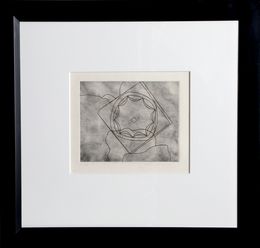
The Art of Framing
Although an artwork itself is fascinating, we can't help but feel that something is missing when it isn't framed. In fact, would we even notice the great masterpieces in galleries if they were not highlighted by a grandiose frame?
The art of framing developed simultaneously alongside the history of art, where painting and framing are two complementary practices which together enhance the overall work. How the framing technique evolved: Frames first appeared as early as 2000 BC with prehistoric rock paintings, where men would draw around their works to mark out and emphasise their drawings. In antiquity, Fayum portraits were surrounded by pieces of wood, and this is how the frame we know today was created.
In the twelfth century, painters began using hard frames called “borders" of varying sizes to highlight church altarpieces. These were however a lot more understated in comparison to the extravagant frames used during the Renaissance, which took hours to sculpt and create.
During the modern and contemporary art movements, the use of frames became completely dependent on the preferences of the artist and their desired outcome. Some artists like Pere Borrell del Caso for example, consider the frame as an integral part of the work, which can be seen within his “Trompe-l'œil" ("deceive the eye") works.
Like with any decorative object in history, the form of the frame developed in conjunction with the current trends of the time. Nowadays, many artists favour simple frames in order to focus the viewer's eye towards their work. This applies to English artist Martin Bradley, whose works are bordered by a very fine gold frame. Graffiti artist Keymi's puzzle pieces are also presented in very plain black frames, allowing the viewer to appreciate the work without getting distracted by embellishments. Sometimes painters go as far as to integrate the frame in the work, or create the work from the frame. This is the case with artist Giulio Paolini, and French painter Louis Cane who was part of the Supports/Surfaces art movement. Meanwhile, emerging artist Gaspard Mitz uses deep set frames for his comparably small artworks (20x30cm). The viewer feels like a giant observing his scale models of exhibition rooms in museums, where figurines marvel at masterpieces and interact with each other.
There are no pre-existing rules for the art of framing, differing styles and materials can be used together without issue. It isn't unusual to find artists experiment with frames, because combining extravagant and minimalist styles allows for an original and completely new composition. Whether it's a classical painting presented behind a coloured Plexiglass screen, or an up-to-date abstract print surrounded by a traditional wood-carved gilded frame, the choices are truly endless.
Aesthetic value is undoubtedly important when it comes to framing, however it is important to remember framing's primary purpose; to protect and support the artwork so it remains in the best possible condition.
Save your search and find it in your favorites
Save your search to find it quickly
Saved search
Your search is accessible from the favorites tab > My favorite searches
Unsaved search
A problem occurred








